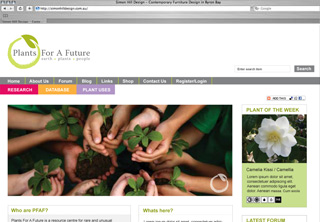On Saturday, at the Hillbrook Sustainability Day when I presented Homage to the Seed project, I'd found some great quotes to post up on the wall discussing biodiversity of edible species, the story of food and agro-biodiversity.
I was reading Michael Pollan a couple of days before and had to include some of his quotes .... and the one by Renner below which he quoted.
Below is a piece from Julian Cribb with a highlighted section that for me is very pertinant. I posted on Cribb here last year after hearing him speak at an Institute of Global Change forum in Brisbane on the Future of Food. One of the reasons I think Botanic Gardens, independant Seed Banks, Research Institutes that are Govt funded and such are so crucial is for identifying new and diverse edible/usable species. Its stands to reason that biologically diverse foodcrops are better for the environment, for our health and so on. They are also far more interesting and culturally enriching.
And so I was delighted to discover this site from the UK called Plants for the Future - this website is well worth a visit.

Plants for a Future
From Wikipedia, the free encyclopedia
Plants For A Future (PFAF) is an online not for profit resource for those interested in edible and useful plants of temperate regions. The project currently has a site in the South West of England where many of the plants are being grown on a trial basis, and maintains a small mail order catalogue. The organization's emphasis is on perennial plants.
The website contains an online database of over 7000 plants that can be grown in the UK, the data is created/collated by Ken Fern, and can be either used online free of charge, or downloaded for a small sum.
Fern has also published a book detailing many of the plants featured in the database.

These notes below are from their website... Ive included them here to promote the idea of variety and hopefully capture the imagination.
| Plant Uses / Edible |
There are over 20,000 species of edible plants in the world yet fewer than 20 species now provide 90% of our food. However, there are hundreds of less well known edible plants from all around the world which are both delicious and nutritious. You can see our top rated edibles here The articles below highlight some of the more unusual edible plants. |
| Database |
| Top Rated plants, 154 plants we consider the best for edibility. |
Edible Part
|

The wonderful thing about the sustainability day I was part of was the extraordinary showcase of local and regional edible plants... and the availability of seeds saved by local initiatives. If I'd not been so busy at my own stand I'd have taken a lot of photos to included here.
So what's available in your part of the world that sustains the biodiversity of edible plants?






oh goodness sophie - like so many of your posts - this is a FEAST! I need a bit of time to digest all the wonderful information you've shared - thanks (hope your WED event was fun and fantastic)
ReplyDeleteThanks Ronnie...
ReplyDeletea really great day indeed... a real celebration too. Your into see saving I know and the local seed-savers network.
People with me on the day could not get over how engaged the pubic was with the seed collection I brought along. Interest is there.... its about bring things closer together that matter I reckon!'
thanks for popping in!
S
wow sofie what an awesome post! Jam-packed full of juicy edible goodness! i think I'll have to book mark it and read a bit each day! Each time I visit here I get so inspired by your passion! It's so infectious, thankyou :)
ReplyDeleteHi Donna... lots of good stuff...
ReplyDeleteI really liked that database of edible parts of plants .... and then the one with edible uses.. often substitutes for other plants.
Know what you mean about come back for a look.
Hope you've been having great things happening with your work!
S